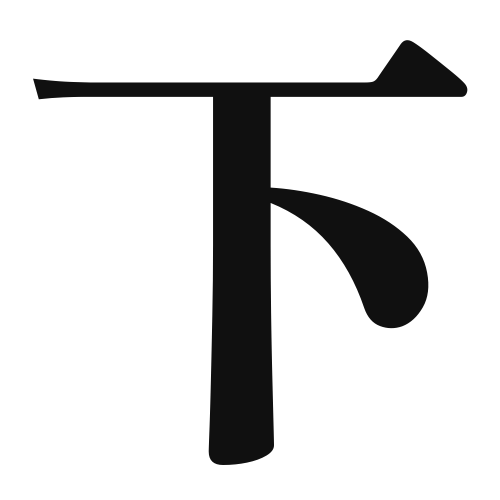1. Overview of Meaning
The kanji 下 (pronounced “shita” in Japanese) primarily means “below,” “under,” or “down.” It is used to indicate a lower position or direction in various contexts.
2. Formation and Radical
Formation of the Kanji: The kanji 下 is a pictogram that originally depicted a person kneeling or sitting down, symbolizing a lower position. It belongs to the category of pictographs.
Radical: The radical for 下 is 下 itself, which is used in other kanji to convey similar meanings related to being below or underneath.
3. Examples of Usage
Common Words and Phrases: Some frequently used words that include 下 are:
- 下手 (へた, heta) – unskilled, poor at something
- 下着 (したぎ, shitagi) – underwear
- 下町 (したまち, shitamachi) – downtown, lower town
Example Sentences in Daily Conversation:
- 「彼は下手な歌手です。」 (Kare wa heta na kashu desu.) – “He is a poor singer.”
- 「下着を買いに行きます。」 (Shitagi o kai ni ikimasu.) – “I am going to buy underwear.”
4. Synonyms and Antonyms
Similar Kanji: A kanji with a similar meaning is 低 (てい, tei), which means “low” but is often used in contexts related to height or level, such as “low temperature” (低温, teion).
Opposite Kanji: The opposite of 下 is 上 (うえ, ue), which means “above” or “up.” This kanji indicates a higher position or direction.
5. Cultural and Historical Background
Relation to Japanese Culture: The concept of “below” or “under” is significant in Japanese culture, often associated with humility and respect. For example, bowing is a gesture that symbolizes lowering oneself in respect to others.
Proverbs and Idioms: One common saying is 下手な鉄砲も数打ちゃ当たる (Heta na teppō mo kazu ucha ataru), which translates to “Even a poor shot will hit if you shoot enough times,” emphasizing the idea that persistence can lead to success, even if one is not skilled.
